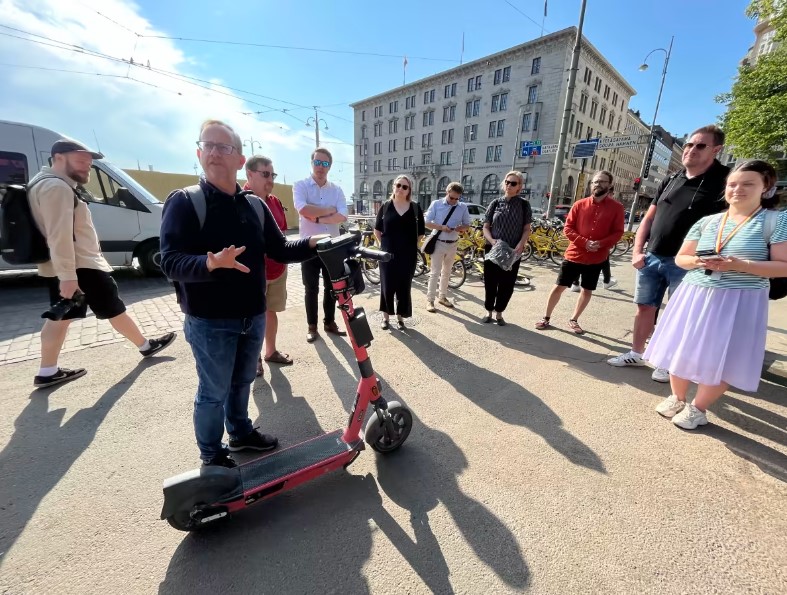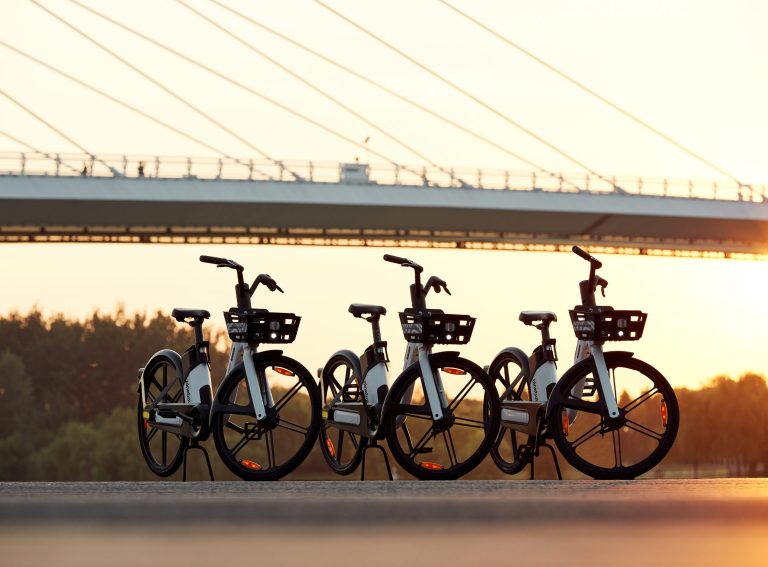Author: Scott Shepard, Head of Policy and Government Affairs, Drover AI
Drover is embarking on two parallel case study projects with the cities of Helsinki and Chicago to resolve multiple pain points that councils, operators and users currently struggle with when integrating shared and dockless e-scooters in dense urban environments.
The aim is to better understand rider behaviour, reduce illegal parking and pavement riding, and harvest granular data to assist planners and policy makers looking to identify infrastructure gaps.
A subset of e-scooters will be equipped with Drover’s patented Path Pilot AI & computer vision safety technology, and GDPR-compliant, edge-based telemetry data will be also collected during each project.
Helsinki
Set to launch in late July 2023, this three-month pilot project is a collaboration between the City of Helsinki, Forum Virium Helsinki, Business Helsinki, VTT Technical Research Centre of Finland, Voi Technology, Vianova and Drover.
As a preview of the case study, a live demo of Drovers Path Pilot technology, in partnership with Voi technology and City of Helsinki was carried out on June 21. Stakeholders representing Finnish national parliament, Finnish department for transport, Helsinki city council, and other agencies were in attendance, and were able to test out the technology for themselves and better understand how AI & computer vision improves riding and parking outcomes.

This pilot is to be composed of two separate phases. The first phase lasting six weeks is to harvest granular infrastructure data and visualise telemetry locations by time and infrastructure type in the Vianova platform. The second phase will introduce a range of audio sounds (during business hours). These sounds will assist with rider behaviour and feature unique sounds related to riding and parking events, such as sidewalks, bike lanes, and virtual parking stations. It is presumed that the introduction of sounds will result in a shift in rider behaviour across infrastructure type, and lead to other valuable data-driven insights (location of hot spots, potholes, and other potential conflict zones).
The case study will culminate in a technical white paper, to be co-authored by Drover and VTT. Geographic and statistical data over the course of the project will be further analysed, and presented in a snapshot of the Helsinki urban environment. The white paper will also be published and presented to a number of mobility events, including POLIS Network, Smart City Expo World Congress, RISE Sweden, Open Mobility Foundation and others.
Chicago
This neighbourhood-based case study, in partnership with the City of Chicago DOT (CDOT), Shared Use Mobility Center (SUMC), SPIN, Blue Systems, and Drover AI, and building upon Chicago’s E-Scooter Programme, will demonstrate how using a combination of AI & computer vision tech and analysing real time rider behaviour can help to identify complete streets investment opportunities in the Chicago Works Infrastructure Plan, thus aligning with transportation justice and mobility equity policies.
As planning and implementation of new infrastructure is typically a slow approval process, real time behavioural analysis can provide more accurate insights into making iterative infrastructure improvements. And by studying these infrastructure interventions at the neighbourhood level, insights can be inferred and applied to the city level.
The results of the case study will be shared in a white paper to be prepared by SUMC and provide recommendations for real world solutions, such as: 1) infrastructure / urban planning improvements; 2) revising public policies and regulations; and 3) positioning both operators and regulators to take necessary and preventative operational actions. The case study may eventually become more ambitious by incorporating added granularity on trip usage and infrastructure types. It is hoped that this technology can potentially be deployed in the Loop and other similar downtowns, where there are a variety of unique infrastructure types to be regulated and enforced, and which will further help to activate downtown streets.
Improved safety & infrastructure
Safety and management of public spaces are two of the most important pain points that cities and regulators currently struggle with when considering inclusion of shared and micro modalities in the urban environment.
The insights gathered from these two case studies (and subsequent white papers) will help to inform decision makers, for example where a dense concentration of potential pedestrian and rider conflict zones are located. An added benefit of the case studies is the ability to gain more accurate knowledge into the quality of infrastructure and public spaces.
This granular infrastructure data is useful for a) making changes to operational and fleet management regulations and b) creating a dialogue between all stakeholders to more accurately assess the dynamic across all modes in the built environment. It is anticipated that these insights will be just the start of more ambitious efforts on the part of stakeholders in both Helsinki and Chicago to take a data driven approach to improved public space management.
Conclusion
The Helsinki and Chicago case studies are a dual effort across two continents and two completely different markets to provide findings and recommendations into how regulators can use the best-in-class of commercial off-the-shelf safety technologies, such as Drovers Path Pilot, to promote more harmony in the management and investment of public spaces.
Granular infrastructure data is a game changer in the industry, and is being sought out by all stakeholders to get a better understanding into how shared and micro modalities can align with sustainable public policies and help to deliver on the promotion of active transportation and modal shift (away from single car ownership).
We are eager to share the results of our findings this autumn and will continue to promote solutions that resolve the unique pain points that regulators are tasked to resolve on a daily basis.











